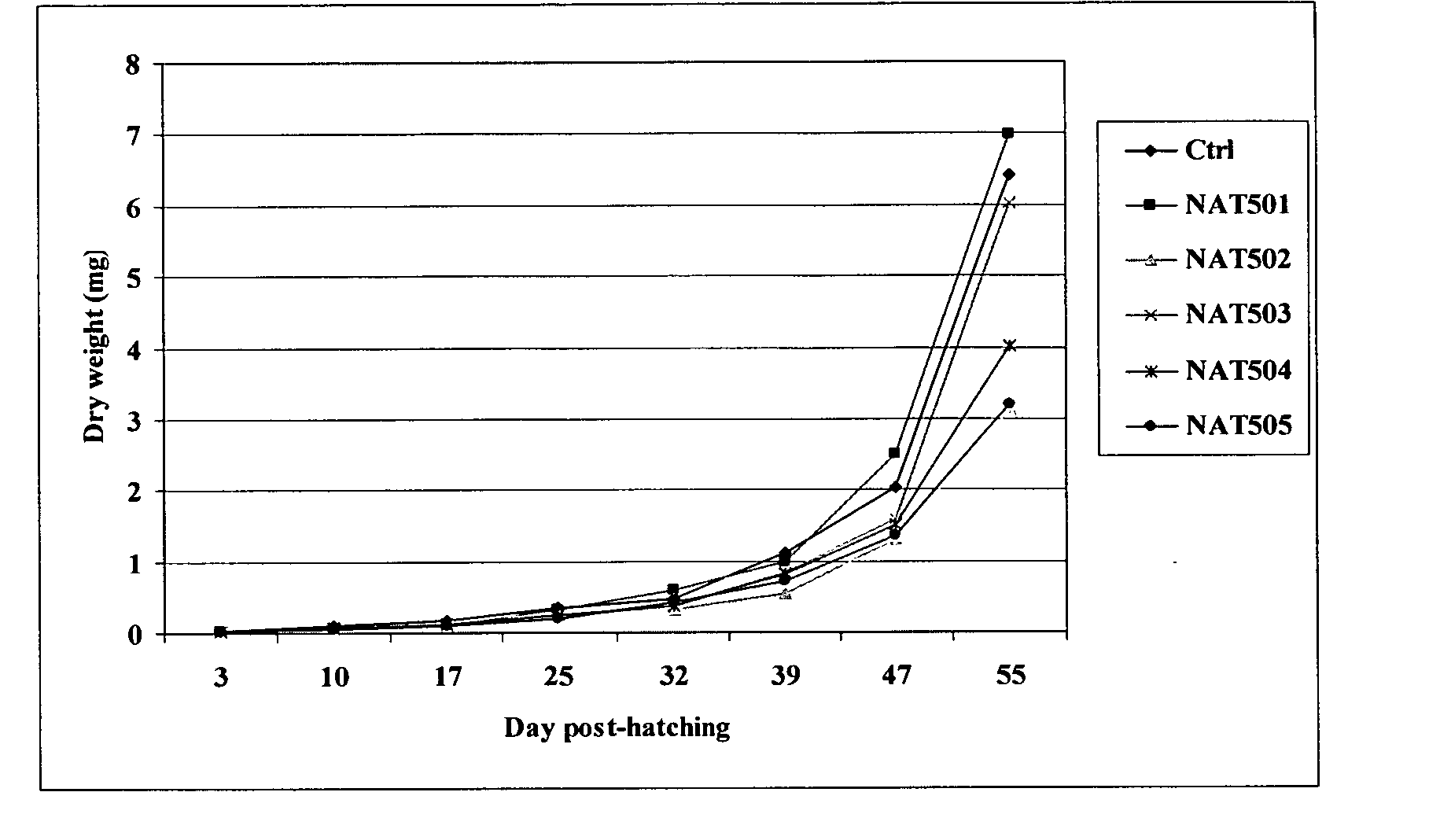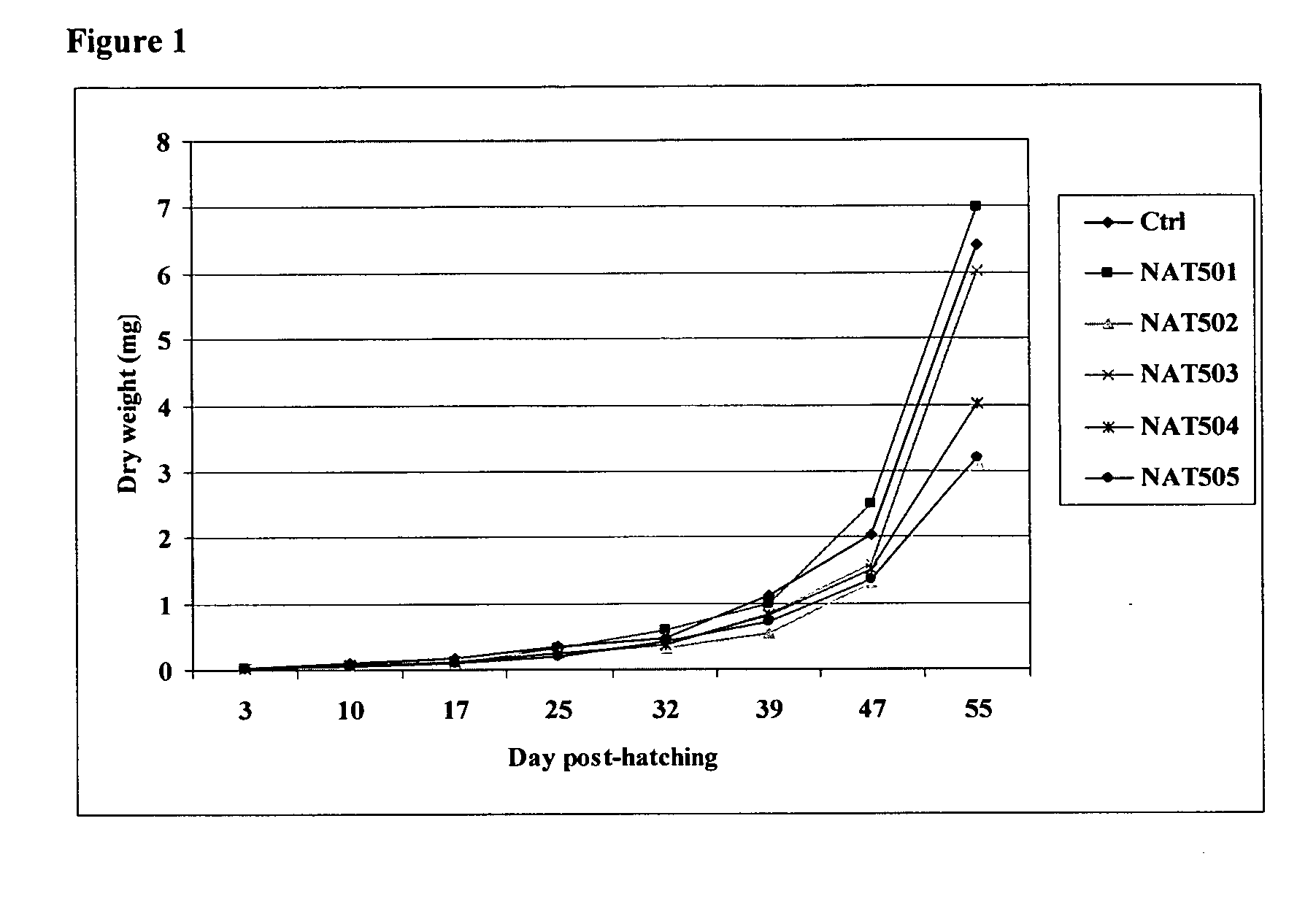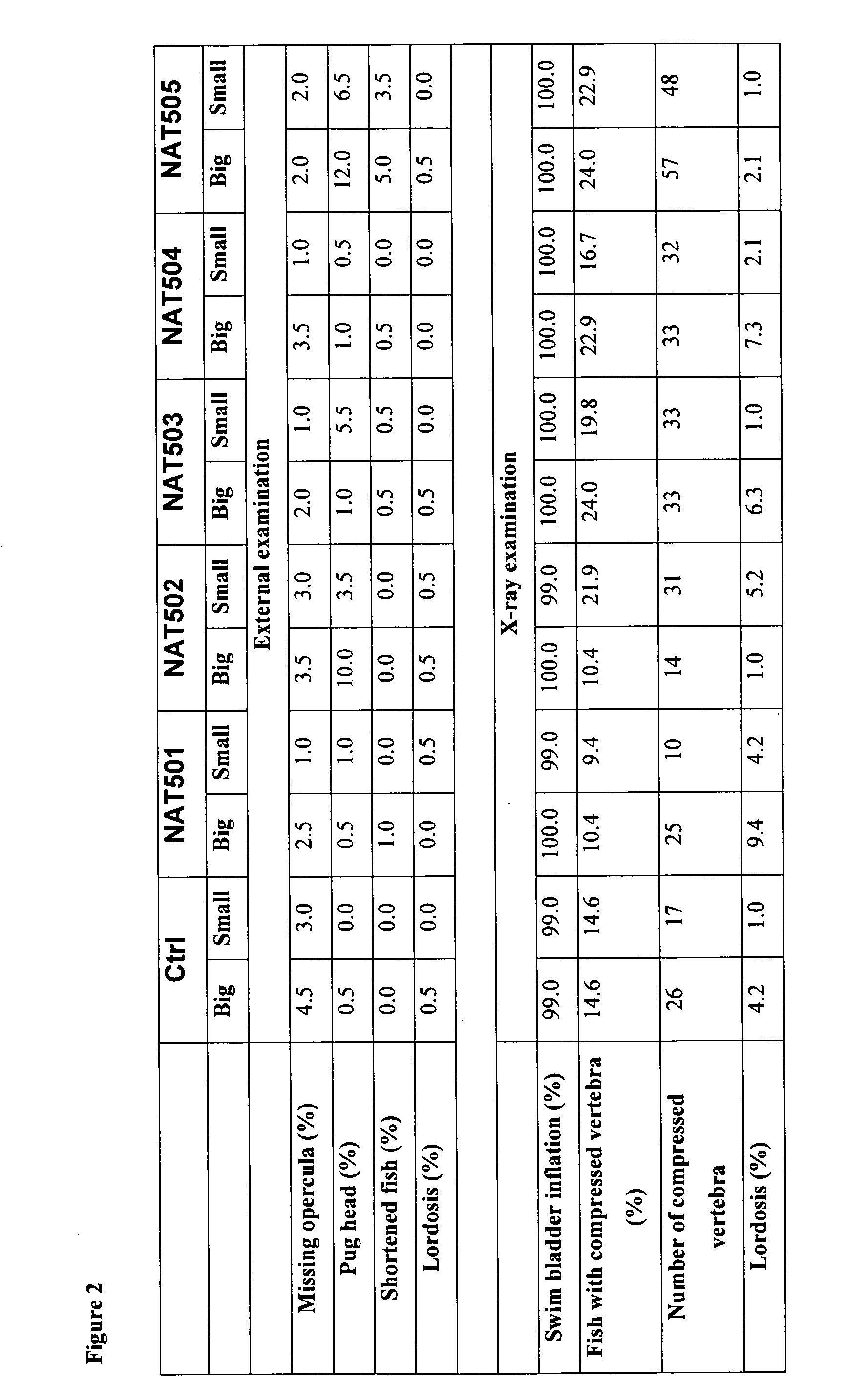Enzymatically synthesized marine phospholipids
a phospholipid and enzyme technology, applied in the field of enzyme-synthesized marine phospholipids, can solve the problems of requiring the presence of non-food compatible solvents, achieve safe and palatable marine phospholipids, reduce the inhibition of immobilized enzymes, and enhance the transesterification rate
- Summary
- Abstract
- Description
- Claims
- Application Information
AI Technical Summary
Benefits of technology
Problems solved by technology
Method used
Image
Examples
example 1
[0050] The commercial product Alcolec 40P® from American Lecithin Company Inc (Oxford, Conn., USA) was used as a phospholipids starting material. This is a crude soybean phospholipid product containing 40% PC, 26% phosphatidylethanolamine, 11% phosphatidylinositol, 1% phosphatidylserine, 13% phytoglycolipids as well as 14% other phosphatides (w / w). A fatty acid ethyl ester (FAEE 10-50) which contained 10% EPA and 50% DHA (relative GC peak areas) was used as an acyl donor. All reactions were performed under N2 at atmospheric pressure and at 55° C. The reaction time was varied from 1 to 140 hours. In order to analyze the product, the sample was fractionated by HPLC-UV with a silica column and methanol-water as mobile phase. The isolated PC fraction was then dried under nitrogen prior to derivatization, finally the fatty acid profile was determined by analyzing the derivatives on a gas chromatography-flame ionization detector (GC-FID). Furthermore, the relationship between PC, LPC and ...
example 2
[0053] 10 g of Alcolec 40P was mixed with 30 g of FAEE 10-50, 10 g of TL-IM and 0.3 g of triethylamine. The reaction was terminated after 48 hours. The results showed that the PC fraction contained 6% EPA and 17% DHA. As a reference, Alcolec 40P, TL-IM and FAEE 10-50 was mixed under identical conditions. The isolated PC fraction from this sample showed 2.8% EPA and 2.8% DHA.
example 3
[0054] The experiment was performed under identical conditions as in example 1 except that for the amount of enzyme was reduced to 5 g for both samples. The reaction was terminated after 4 days. The isolated PC fraction showed 2.5% and 0.9% EPA+DHA for the reaction with ethanolamine addition and the reference sample, respectively.
PUM
| Property | Measurement | Unit |
|---|---|---|
| w/w | aaaaa | aaaaa |
| w/w | aaaaa | aaaaa |
| w/w | aaaaa | aaaaa |
Abstract
Description
Claims
Application Information
 Login to View More
Login to View More - R&D
- Intellectual Property
- Life Sciences
- Materials
- Tech Scout
- Unparalleled Data Quality
- Higher Quality Content
- 60% Fewer Hallucinations
Browse by: Latest US Patents, China's latest patents, Technical Efficacy Thesaurus, Application Domain, Technology Topic, Popular Technical Reports.
© 2025 PatSnap. All rights reserved.Legal|Privacy policy|Modern Slavery Act Transparency Statement|Sitemap|About US| Contact US: help@patsnap.com



